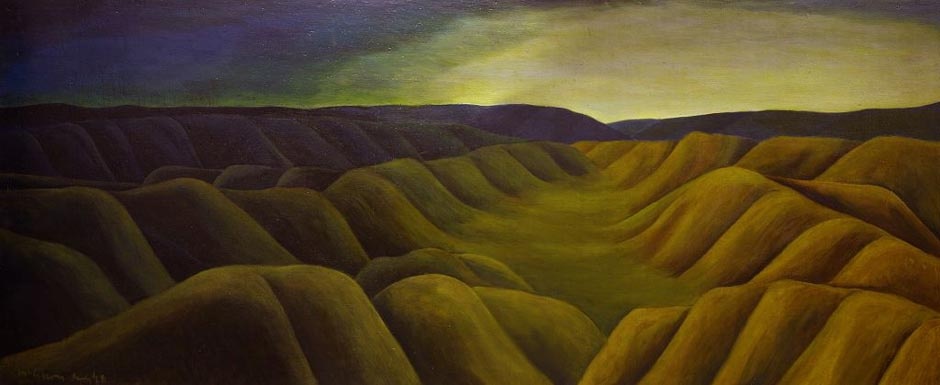
Takaka: night and day, 1948, by Colin McCahon.
In 1972, Colin McCahon (1919–87) wrote about the origin of his painting Takaka: night and day:
The Takaka painting was painted round the corner of a room [his bedroom/studio in the artist Doris Lusk’s house], no one wall being itself long enough. … It [re-]states my interest in landscape as a symbol of place and also of the human condition. It is not so much a portrait of a place as such but is a memory of a time and an experience of a particular place.
This work was painted in the studio from memory. McCahon was trying to capture the essence of Tākaka, not replicate the scene as he saw it. There is a Biblical allusion to the passing of night into day, darkness into light. This painting illustrates two issues that remained central to McCahon’s work throughout his career: his personal exploration of spirituality and religious faith, and his depiction of the New Zealand landscape.
At the time it was painted, this was the largest work McCahon had produced.

Community contributions